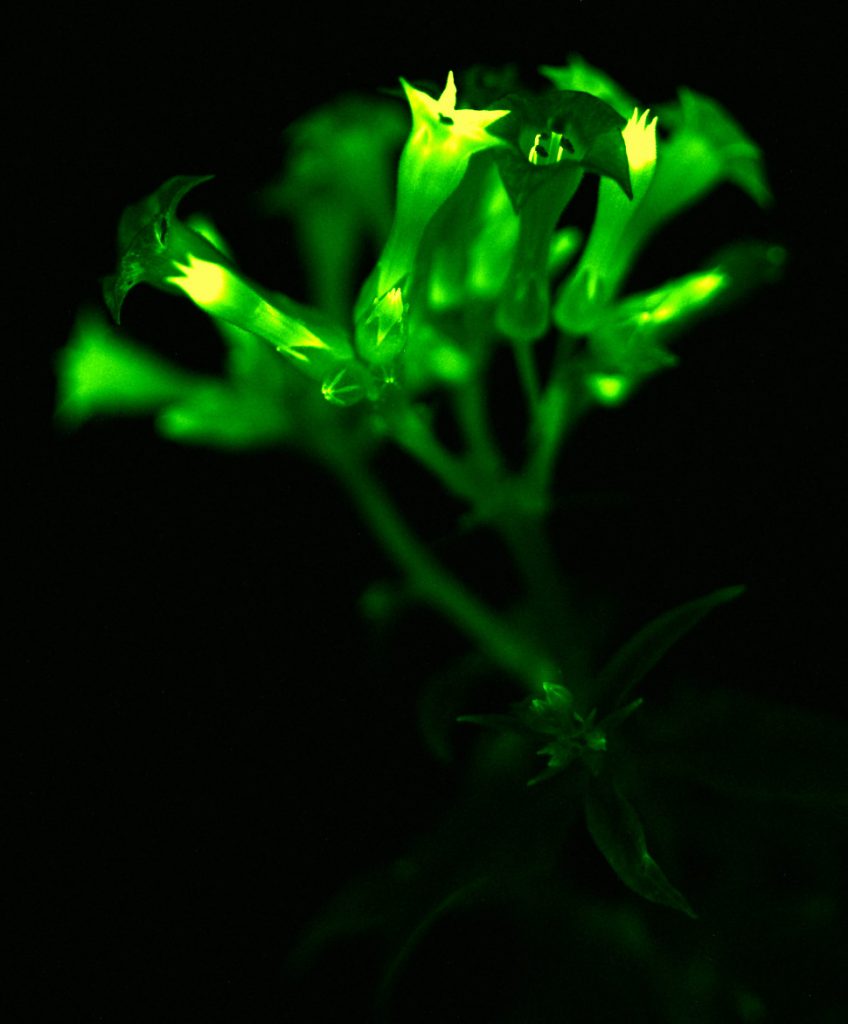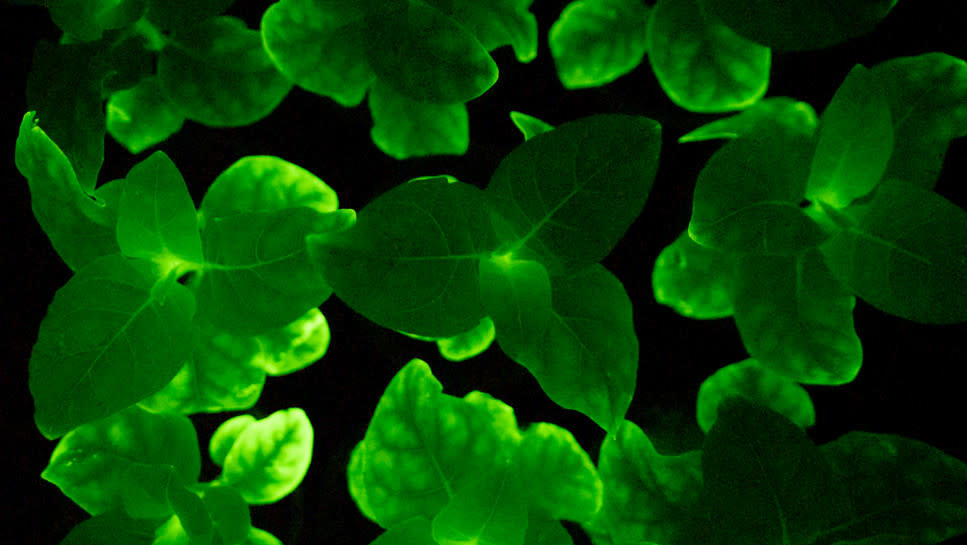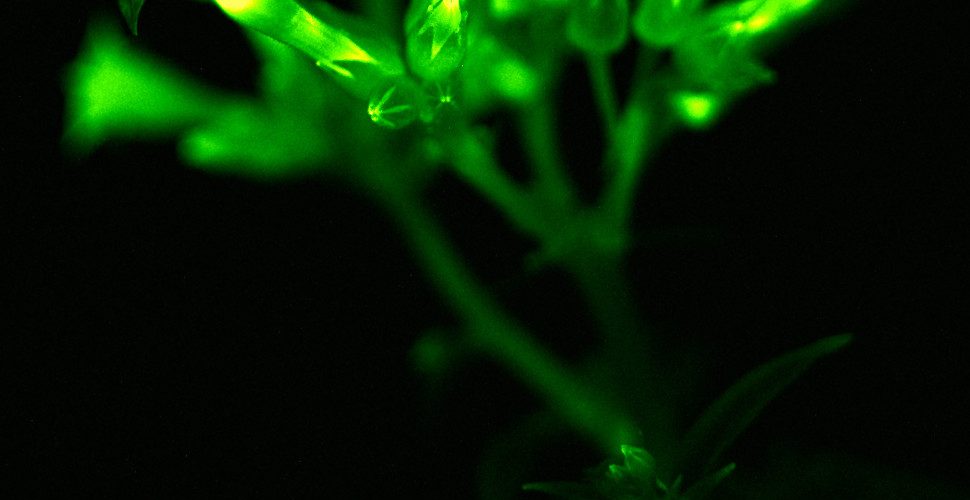
Research on plants that glow in the dark has been published. The shining plant research paper was published by a research team at the Russian Academy of Sciences in Nature Biotechnology. Of course, shining plant research itself is not new. Plants shining using bacterial genes have existed before. However, the study released this time attracts attention because it can shine 10 times brighter than plants using bacteria using the mushroom gene.
The research team introduced the bioluminescent structure found in mushrooms into tobacco. Tobacco was chosen as the representative plant because of its simple gene and fast growth. The core of the glowing plant structure is coffee acid. It is an oxidizing molecule in which two enzymes change coffee acid to the previous stage of the glowing substance, and add the enzyme once again to emit photons. In other words, it shines. It is difficult to say that mushrooms and plants are biologically friendly, but in this study, they have succeeded in metabolic processes.

Glowing plants using mushroom DNA shine automatically without external help. It can continue to glow until it withers and dies. At this stage, there is no impact on the original ecology and growth. It is said that even leaves, stems, roots, and flowers can be seen with the naked eye. Interestingly, the strongest luminescence is that the flowers are the strongest among the younger plants. Glowing plants can also help you study the interior of the plant.
Glowing Plant Research was spun off and founded as Light Bio with the funding of Planta LLC, a biotech startup based in Moscow. In the study, cigarettes were used, but it is said that grass and roses can be emitted in the same way. Related information can be found here .


















Add comment